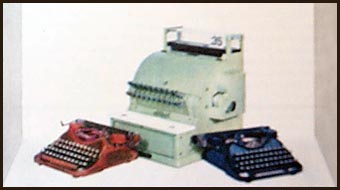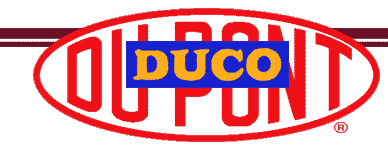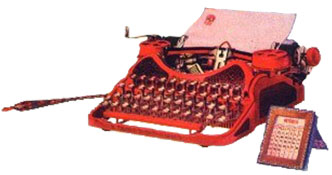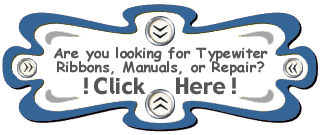In 1923, DuPont developed a new paint finish dubbed DUCO® nitrocellulose lacquer. This innovation was the first sprayable top coat finish on the market and it was adopted by the auto and other industries due to the time and cost savings. A DuPont DUCO® ad from the September 1925 issue of The Nation's Business states:
"It took 336 hours to finish one well known automobile with old finishes. DUCO cut this time to 13-1/2 hours. Labor time was formally 6.7 hours. DUCO reduced this to 5.7 hours. Even the cost of materials has been reduced."
That same ad says that the DUCO® finish could be applied either by a pneumatic spraying machine, or by mechanical dipping process. The finish was also said to have dried quickly and was even packageble soon afterward. It also says that the DUCO® finish could not be applied with a brush. Later it appears that a reformulation was performed so that the finsh could be applied with a brush, the made the Duco avalible to a wider, non-industrial markets. DuPont offered the aid of a DUCO® Finishing Engineer to demonstrate proper finish application for industrial customers.
In an October, 1925 ad, also from The Nation's Business, DuPont lists typewriters as one of the articles that have been given a new appearance and added endurance qualities. They claim that:
"...by using Duco you [make the product] more beautiful — more durable — easier to clean — sanitary — waterproof — steamproof — immune to the action of gases, oils, salt air, alkali dust, perspiration[.]"
 Then a November 1925 ad, this too from The Nation's Business, they
add boiling water, alkaline soaps, hot or cold gases or oils, and withstands
repeated cleaning and is non-absorbant to the previous list of virtues.
DuPont's ad also says that the finish will not get sticky for heat or handling,
and the it will not chip, crack or peel and hard to scratch. From the examples
of DUCO® Coronas in my collection after 80+ years there is some
chipping and peeling, but who in the 1920's or at DuPont would have thought of
people collecting and evaluating their creations.
Then a November 1925 ad, this too from The Nation's Business, they
add boiling water, alkaline soaps, hot or cold gases or oils, and withstands
repeated cleaning and is non-absorbant to the previous list of virtues.
DuPont's ad also says that the finish will not get sticky for heat or handling,
and the it will not chip, crack or peel and hard to scratch. From the examples
of DUCO® Coronas in my collection after 80+ years there is some
chipping and peeling, but who in the 1920's or at DuPont would have thought of
people collecting and evaluating their creations.
To be sure, the Corona Typewriter company, and later the L.C. Smith & Corona Typewriters, Inc., decided that they could use this innovation to market their machines to those who might not be exactly enamored with the basic black that that had so dominated the color scheme of many manufacturing firms. People wanted some color in their manufactured goods, and DuPont made that possible at a lower price, with long lasting results. Basic black is now an option – not the only choice available (ala. Ford Motor's "you can have any color you what – as long as it's black" joke).
The DUCO® colored Corona typewriters were marketed to those who wanted a machine to be in "perfect harmony with their library, boudoir, or the little nock of a study where they wrote." They could choose from a variety of color combinations – devised to attract customers who would what a colorful typerwriter.
















